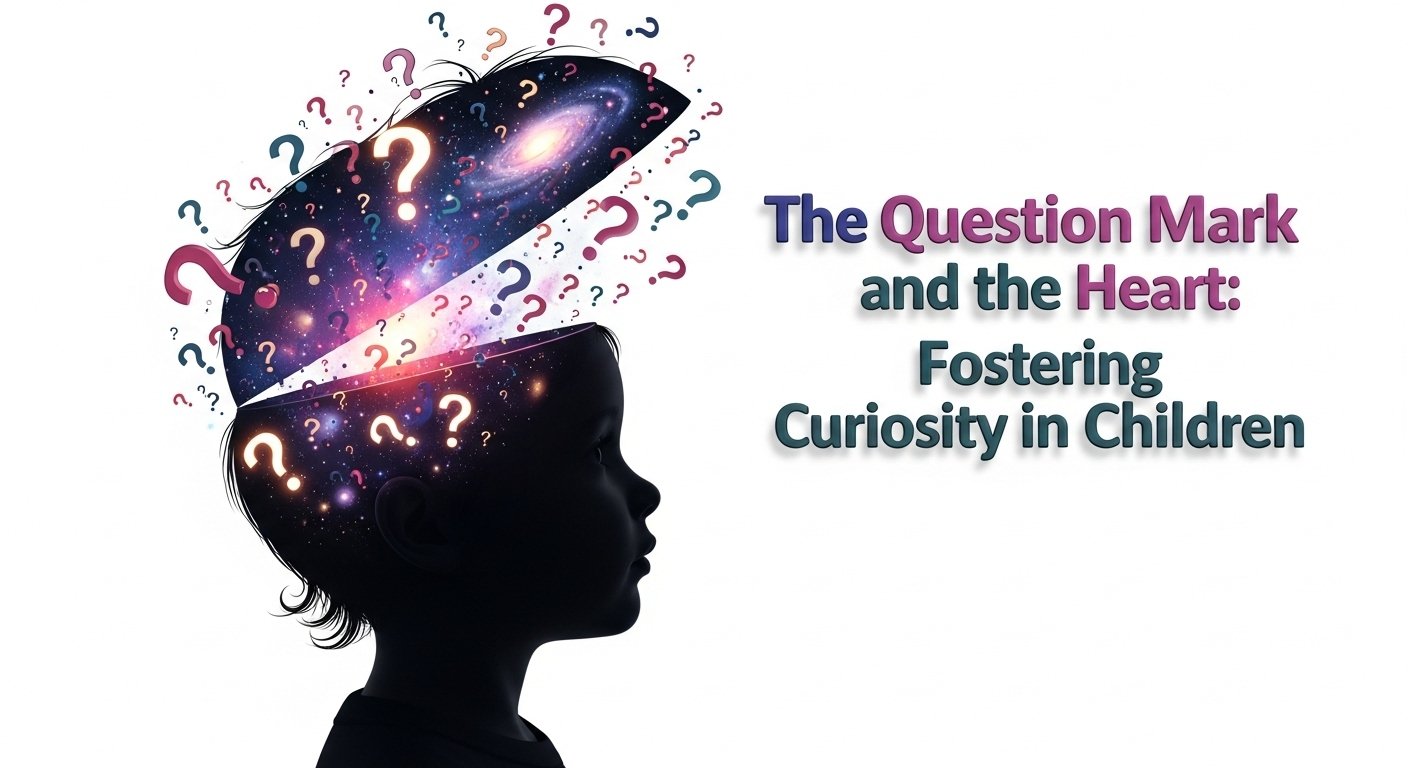The Question Mark and the Heart: How Social-Emotional Learning Builds Character by Fostering Curiosity
“Why is the sky blue?” “How do worms breathe?” “If we’re all moving, why don’t I feel it?” Every parent and teacher knows the sound of a child’s curiosity in overdrive—that relentless, wonderful, and sometimes exhausting cascade of “Whys?” In our rush to provide answers or simply manage the day, it’s easy to see this questioning as a phase to get through. But what if we saw it for what it truly is? What if we recognized that a child’s curiosity is the raw, powerful engine of all learning, growth, and, most importantly, character development? The key to protecting and nurturing that engine lies in social-emotional learning.
We often think of character building as teaching children to be polite, honest, or hardworking. While those traits are important, true character is forged in moments of challenge and discovery. It’s the resilience to try again after an experiment fails. It’s the empathy to wonder about someone else’s perspective. It’s the courage to admit you don’t know and the integrity to seek the truth. These are the very skills that social-emotional learning is designed to cultivate. By creating an environment of emotional safety and teaching children the skills to manage their inner world, we give their natural curiosity the fuel and the freedom it needs to flourish, ultimately shaping them into a generation of thoughtful, resilient, and engaged human beings.
The Unbreakable Link: Why Curiosity is the Engine of Character
In our quest for academic achievement, we sometimes create environments that inadvertently punish curiosity. We prioritize the right answer over the brilliant question. We value quiet compliance over noisy, messy exploration. But when we stifle a child’s drive to ask “Why?”, we are doing more than just hindering their learning; we are stunting their character development.
Consider this:
- Resilience is built when a child’s curiosity about whether they can climb a little higher outweighs their fear of falling, and they learn to try again when they stumble.
- Empathy is born from a genuine curiosity about another person’s feelings: “Why is my friend crying?”
- Integrity is developed when a child’s curiosity for the truth is stronger than their desire to be right.
Curiosity is the spark. It’s the intrinsic motivation to explore, to question, and to understand. However, for a child to follow that spark into challenging or unfamiliar territory, they need a robust set of emotional tools. They need the self-management to handle frustration and the social awareness to collaborate with others. This is why a strong foundation in social-emotional learning is not just a “nice-to-have”; it is the essential bedrock upon which a curious character is built.
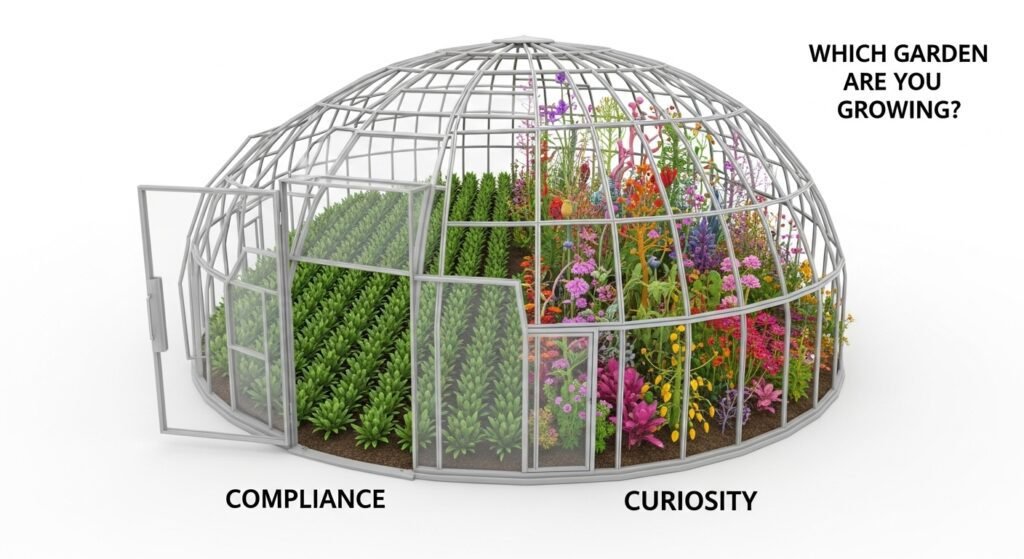
The Two Climates: Fostering vs. Foiling Curiosity
The environment we create as parents and educators plays a massive role. It can either be a greenhouse where curiosity can thrive or a freezer where it withers.
| The Climate of Compliance (Foils Curiosity) | The Climate of Curiosity (Fosters Curiosity) |
| Focus: Getting the single “right” answer. | Focus: The process of discovery and asking great questions. |
| Mistakes are: Problems to be avoided or penalised. | Mistakes are: Valuable data and opportunities for learning. |
| Teacher/Parent Role: The expert with all the answers. | Teacher/Parent Role: A co-learner and facilitator of exploration. |
| Questions: “Silly” or off-topic questions are discouraged. | Questions: All questions are welcomed as a sign of an engaged mind. |
| Environment: Quiet, orderly, and predictable. | Environment: Can be messy, noisy, and full of experimentation. |
Export to Sheets
A classroom or home that prioritises compliance may produce children who are good at following directions, but a climate of curiosity produces children who are good at thinking for themselves. This is a key goal of social-emotional learning.
AI Study Tips for High School to College Transition | Boost Learning in 2025
The SEL Toolkit: How Each Competency Builds the Curious Character
Let’s break down exactly how each of the five core competencies of social-emotional learning, as defined by CASEL, directly contributes to fostering a curious and resilient character.
1. Self-Awareness → The Spark of Inquiry
The Connection: All curiosity begins with an internal nudge. It’s the self-awareness to recognise a gap in your own knowledge and the desire to fill it. A child who is self-aware can identify their own interests and passions, which is the starting point for all self-directed learning. The Character Link: Integrity and Authenticity. The Activity: “The Question Journal” Give your child a simple, blank notebook. This is their “Question Journal.” There are no rules, no grades, and no judgment. It’s a private space for them to write or draw any question that pops into their head, from “Why do we dream?” to “How does a toaster work?” This activity validates their inner world and treats their questions as treasures.
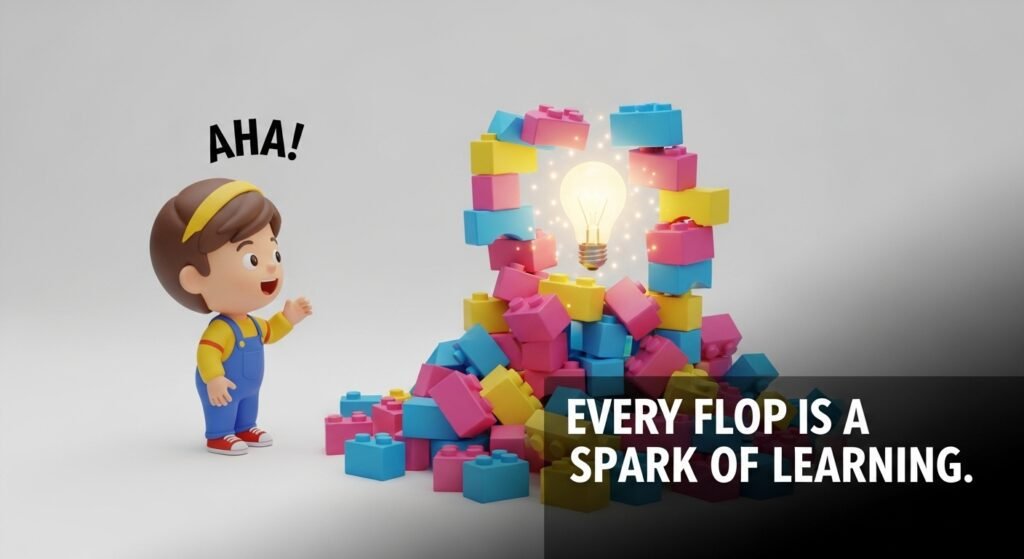
2. Self-Management → The Resilience to Discover
The Connection: The path of curiosity is paved with frustration. Experiments fail, research leads to dead ends, and answers are rarely immediate. Self-management is the skill of handling this “productive struggle” without giving up. The Character Link: Resilience and Perseverance. The Activity: “Celebrating the Magnificent Flop” When a project or experiment fails—the tower of blocks collapses, the drawing gets smudged—don’t rush to fix it. Instead, celebrate it! Say, “Wow, that was a magnificent flop! What did we learn from that?” This reframes failure as a normal and valuable part of the discovery process, teaching kids to manage their frustration and try again with new information.
3. Social Awareness → Curiosity About Others
The Connection: As children grow, their curiosity naturally expands from the physical world to the social world. Social awareness is the ability to be curious about others—to wonder about their experiences, their feelings, and their perspectives. The Character Link: Empathy and Compassion. The Activity: “The Story Swap” Pair children up and have them interview each other with a few simple questions: “What is something that makes you happy?” “What is something that is hard for you?” Then, have them share their partner’s story with the larger group. This simple exercise builds active listening skills and encourages genuine curiosity about a peer’s inner life.
4. Relationship Skills → Collaborative Discovery
The Connection: The greatest discoveries in history were rarely made by lone geniuses. They were the product of collaboration, debate, and building on each other’s ideas. Relationship skills allow children to turn their individual curiosity into a shared adventure. The Character Link: Collaboration and Respectful Communication. The Activity: “The Big Question Brainstorm” Pose a big, open-ended question to a group, like, “How could we design a new game for the playground?” or “What would be a better way to organise our classroom library?” The goal isn’t to find a single right answer, but to practice brainstorming, listening to others’ ideas, and saying “Yes, and…” This is a core practice of social-emotional learning.
5. Responsible Decision-Making → Ethical Exploration
The Connection: Curiosity needs a conscience. A child might be curious about what happens if they pull the cat’s tail or draw on the wall. Responsible decision-making is the skill of thinking through the potential consequences of our curiosity-driven actions. The Character Link: Responsibility and Wisdom. The Activity: “The Ripple Effect” Before starting a new project or experiment, use this simple framework. Ask:
- “What is our goal? (What are we curious about?)”
- “What are the potential ripples? (What could happen, good and bad?)”
- “What is a safe and respectful way to find out?” This teaches children to be bold in their curiosity but thoughtful in their actions.
AI Study Tips for High School to College Transition | Boost Learning in 2025
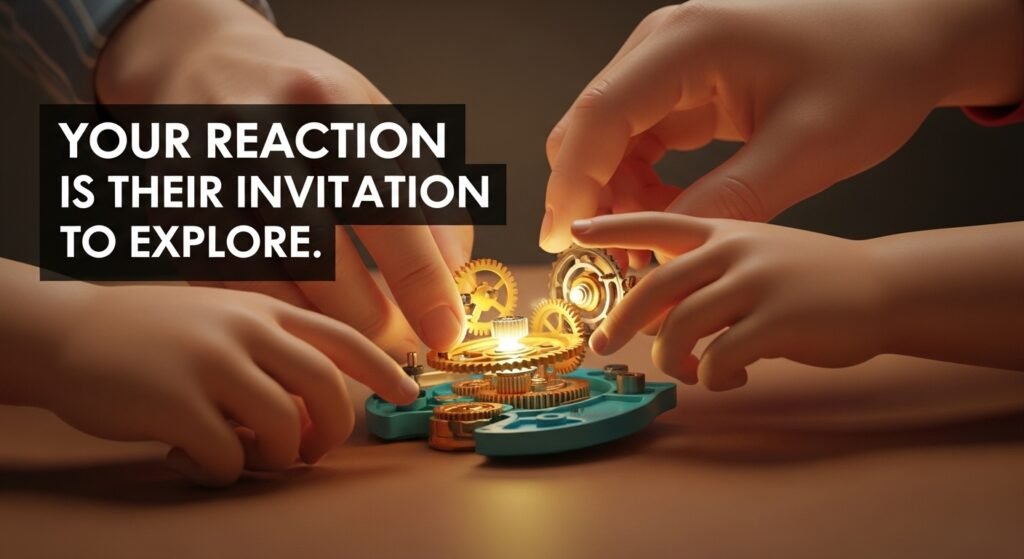
A Personal Story: The Broken Toy and the Birth of an Engineer
I once visited a friend whose five-year-old son, “Leo,” had just been given a new, fancy remote-control car. Less than an hour later, my friend found Leo in the corner, surrounded by the car’s disassembled parts. His initial, very understandable reaction was frustration. “You broke your brand new toy!”
But then he paused. He took a breath. And he shifted his perspective. Instead of seeing a broken toy, he chose to see a curious mind. He sat down and said, “Wow, you took the whole thing apart! You must have really wanted to see how it works. Can you show me what you discovered?”
Leo’s face lit up. He excitedly pointed out the motor, the gears, and the wires that received the signal. In that moment, Leo wasn’t a “naughty boy” who broke a toy; he was an engineer on a mission of discovery. By reacting with curiosity instead of anger, my friend didn’t just save their relationship with Leo; he validated his son’s inquisitive nature and reinforced the character traits of exploration and analysis. That small shift in response made all the difference.
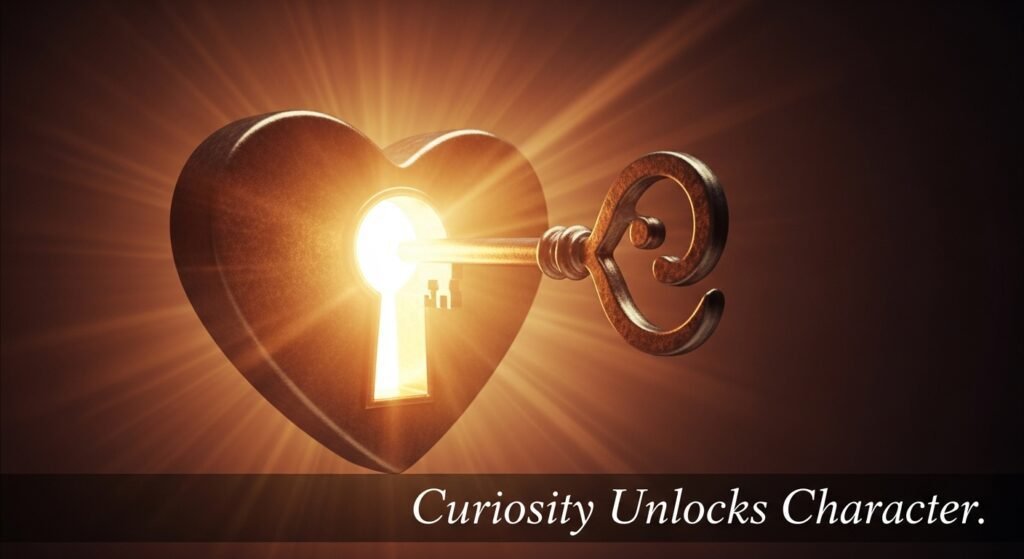
Conclusion: Raising a Generation of Questioners
We often separate the development of character from the pursuit of knowledge. We want our children to be “good people,” and we want them to be “smart students.” But the principles of social-emotional learning teach us that these two goals are not separate; they are deeply intertwined.
The most resilient, empathetic, and innovative adults are those who have never lost their childhood sense of wonder. They are the ones who continue to ask “Why?” and “What if?” By creating homes and classrooms that are safe harbours for curiosity, and by equipping our children with the emotional skills to navigate the frustrations and joys of discovery, we are not just raising children who will do well in school. We are raising the creative problem-solvers, the compassionate leaders, and the lifelong learners who will shape a better future for us all.
What is the most wonderfully curious question a child has asked you recently? Share the moment in the comments below!
AI Study Tips for High School to College Transition | Boost Learning in 2025

